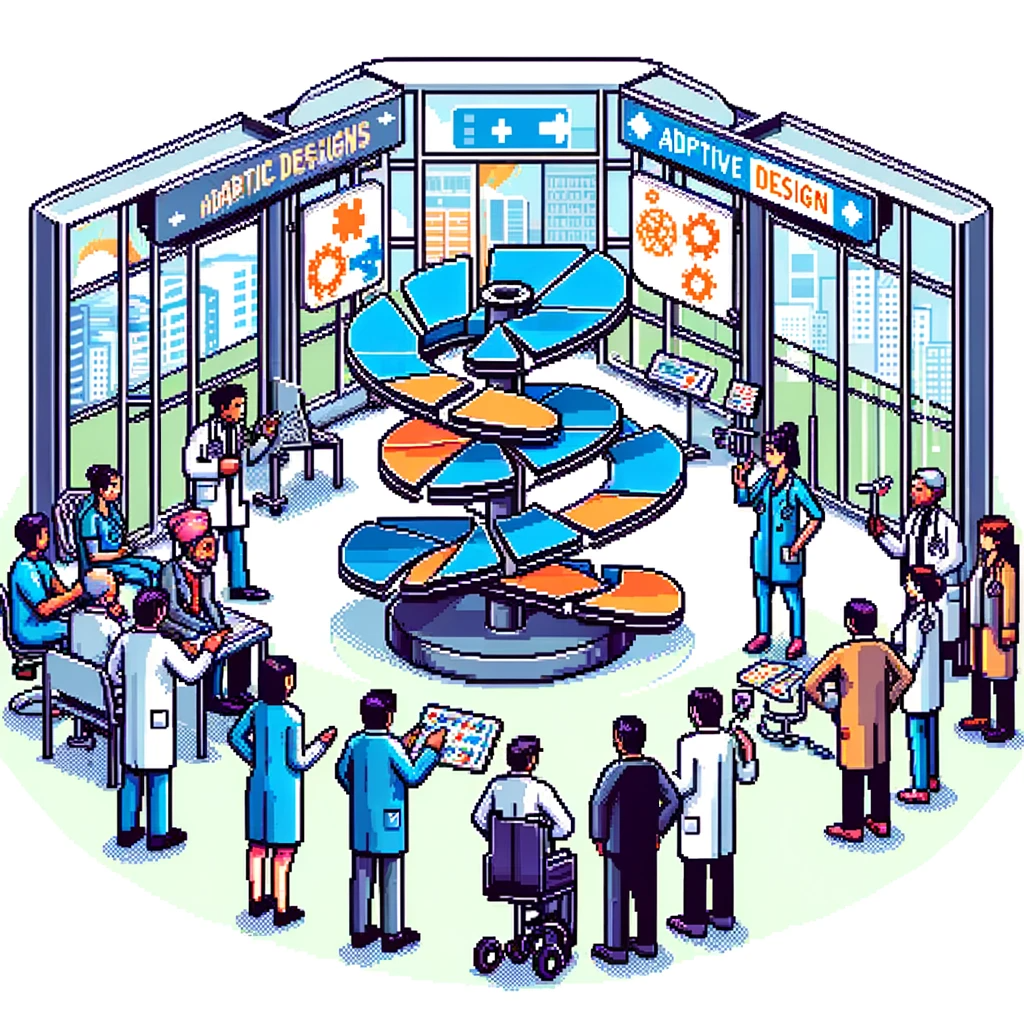
Adaptive Designs in Healthcare: Implications for Public Health Practice
In the rapidly evolving world of public health, staying ahead of the curve is crucial. The recent article, Adaptive Designs in Implementation Science and Practice: Their Promise and the Need for Greater Understanding and Improved Communication, by Amy Kilbourne and colleagues, published in the Annual Review of Public Health, presents a groundbreaking approach that could revolutionize how we implement health interventions. Here’s why it matters.
Understanding Adaptive Designs
In simple terms, adaptive designs in healthcare are about being flexible and responsive. Think of it as a smart, responsive system in health interventions. Traditional health interventions often stick to a pre-determined plan, like a train on a fixed track. Adaptive designs, however, are like cars equipped with GPS, constantly receiving information and adjusting the route as needed.
Key Elements of Adaptive Designs
- Real-Time Adjustments: Adaptive designs allow for modifications in the intervention based on ongoing observations and results. This could mean changing treatment protocols, adjusting dosage, or shifting resources as new information comes to light.
- Responsiveness to Patient Needs: Every patient is unique, and adaptive designs recognize this by tailoring interventions to individual patient needs. This approach ensures that each patient receives the most effective care based on their situation.
- Flexibility in Changing Environments: Healthcare environments are dynamic, constantly emerging new challenges and opportunities. Adaptive designs equip healthcare providers with the ability to pivot and adapt to these changes, ensuring that interventions remain relevant and effective.
- Data-Driven Decisions (though a reminder that I prefer data-informed): The heart of adaptive designs is data. By continuously analyzing data, healthcare providers can make informed decisions about adjusting their approaches for the best outcomes.
The Challenge of Clarity
One of the main challenges in embracing adaptive designs in public health practice is the confusion around the term itself. The article by Kilbourne et al. sheds light on this issue, proposing a clearer taxonomy and definition to ensure everyone in the field is on the same page.
Why Adaptive Designs Matter
Adaptive designs have the potential to make health interventions more effective and responsive. They can lead to:
- Tailored healthcare solutions that meet the specific needs of different populations.
- Increased efficiency in how health interventions are rolled out and adjusted.
- Enhanced ability to respond to unforeseen challenges during implementation.
The Road Ahead
For adaptive designs to truly transform public health practice, a concerted effort must be made towards better communication and understanding. Stakeholders across the healthcare spectrum must engage in active dialogue and education about these innovative approaches.
The shift towards adaptive designs in implementation science marks a significant step forward in our ability to deliver tailored and effective healthcare solutions. By embracing flexibility and adaptability, we can better meet the diverse needs of populations and respond more dynamically to the challenges of public health.
Transform Information into Action – Subscribe Now!
Your key to unlocking the power of public health knowledge awaits! ‘This Week in Public Health’ is not just a newsletter; it’s a catalyst for informed action. With a focus on cutting-edge research, community health successes, and advocacy insights, each issue empowers you to make a tangible impact. Subscribe for free and turn information into action today!



